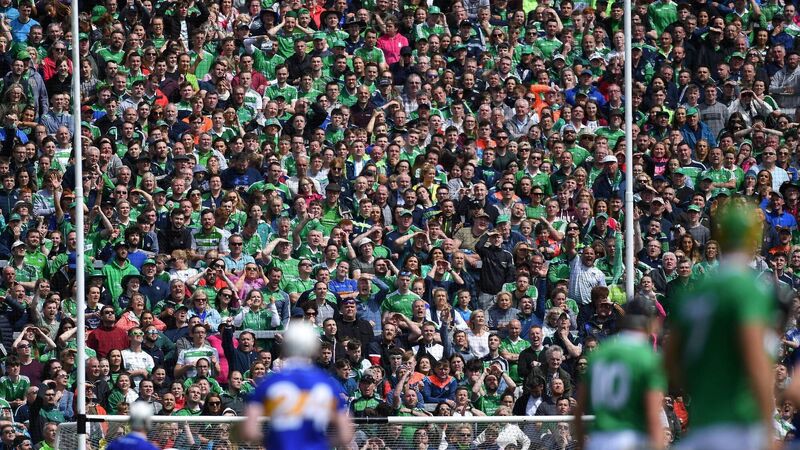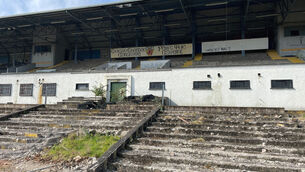Michael Moynihan: The drive to succeed may never be the same again

A couple of weeks ago I was chatting to Sean McCarthy, wing-back on Cork’s 1990 All-Ireland-winning team.
He was fleshing out the picture of team preparation by recalling journeys to games with Canon Michael O’Brien, and the clergyman’s subtle priming of his passengers for combat. If they were going to Thurles, for instance, the psychological stakes were raised when the car turned left at Horse and Jockey.
On a scale of one to ten travelling to games individually rather than in groups of four is hardly the greatest hardship to bear in order to return to action, but as an unintended consequence it certainly puts a dampener on the entire experience.
Everyone has a tale about going to or coming from a game in a crowded car, though history may be a harsh judge of some of the yarns from the seventies about entire underage teams squeezing into a solitary Cortina.
(That said, your columnist can certainly recall a particular Fiat Mirafiori which occasionally transported a goalkeeper, entire defence and midfield pairing to underage games.)
Getting older - and bigger - meant fewer players per vehicle, but it also meant the stakes were raised.
Conversationally, anyway. That Mirafiori usually echoed to competing impersonations of Kenny Everett’s characters (either Sid Snot or Brother Lee Love), while the grown-up discussions were more match-oriented.
Or not.
As a sample charge I can recall heading - as an adult this time - to a football game in north Cork and our driver, and wing-back, telling us about a performance of Les Miserables he’d attended in Dublin.
There was a brief silence when we approached the roundabout in Mallow, and someone piped up from the back seat.
“How old was that child exactly, Paddy?”
Well, maybe you had to be there. Which is something that rings true about 99 per cent of car-to-game-based yarns. Travelling to a game in a car with three or four others is an oddly intimate experience.
It can also be oddly intimidating - Anthony Daly of this parish is fond of telling the story from his Clare minor days of seeing Cork arrive at a championship match in a fleet of sleek taxis, making a statement simply by doing so. Kerry’s Tomás Ó Sé is another former player with a fondness for the traditional multi-car convoy heading to a game.
The car journey has its disadvantages compared to the team bus. There’s no loo in a car, and for a player with butterflies ahead of a big game, stopping by the side of the road for various necessities isn’t likely to ease the tension.
Having it ruled out as an option by extraneous factors is a pity, though.
You could go further and put your Freakonomics head on: then you could trace the graph of Ireland’s prosperity by the drift from three or four players carrying the entire team thirty years ago, to the likelihood nowadays that practically every adult player owns or has access to a car.
In sharp contrast, back in the eighties it was no surprise if a player didn’t have a car. Or had never had a car.
Travelling singly to games is not the greatest sacrifice facing us, as already noted. But having company would make the journey a little less miserable, put it that way.
Clearly I must be the only person in Ireland without a personalised Jack Charlton story, to judge by the outpourings over the weekend.
Were there private audiences being appointed on the quiet throughout the late eighties, or was it just a smaller society all round?

Ireland had lost to Holland in a play-off for the European Championships of 1996 - trawling Youtube I see I’d forgotten Patrick Kluivert’s first goal, an angled cross-shot.
The second, a calm finish with a couple of minutes to go, stayed with me. Even though it wasn’t an emphatic, net-billowing blast there was still an end-of-an-era tinge to that scene.
The odd glimpse of Jack on screen - sombre, anorak, flat cap - added to that sense of an ending.
Not long after I happened to be in The Baggot Inn in the city centre on a busy evening, and Jack came in, accompanied by a sizeable entourage.
He dawdled at the bar, chatted to a couple of people who came up and shook his hand, and then he disappeared out the back and . . . that was it, really.
It was all very low-key and understated. The hysteria of 1988-1990 was long behind us by then, and everybody knew the carnival was over. But the people who approached him that evening were signalling their appreciation.
And why not? What a carnival it was. Rest easy, Jack.
Very interesting to see what’s going on in Wexford in recent days with GAA teams returning to action.
If you aren’t following this slavishly, a refresher: last week Rapparees selector Padge Walsh told Wexford Today that defender Liam Ryan, a Wexford senior panellist, had injured his foot “doing something with the county team or something”.
A day or so later club chairman Michael Doyle told John Fogarty of this parish: “I didn’t see the interview that 'Skinner' (Padge Walsh) did but he obviously made a remark that was in the heat of the moment. The fact is Liam was injured in training for Rapparees getting ready for the Shels match. That’s where it started and that’s where it finished.”
I can only say it reminded me of the scene in Jaws on the ferry, when the coroner says he’ll alter his report, but between this - however you want to describe it - the developments involving several clubs in the Carbery division in Cork, and the case in Kilkenny, it looks like some kind of vigilance committee needs to be reinstated.
It’s not all bad news. I am informed that Kevin Barry has a new book out soon, That Old Country Music.
Readers with good memories will recall Barry’s time as a columnist with this newspaper, of course.
Since then he’s written novels (Beatlebone, City of Bohane, Night Boat to Tangier) and short stories (collections like Dark Lies The Island, There Are Little Kingdoms).
His new book is a another collection of short stories and is due out this October. Put a reminder on your phone now.
You won’t be sorry.








